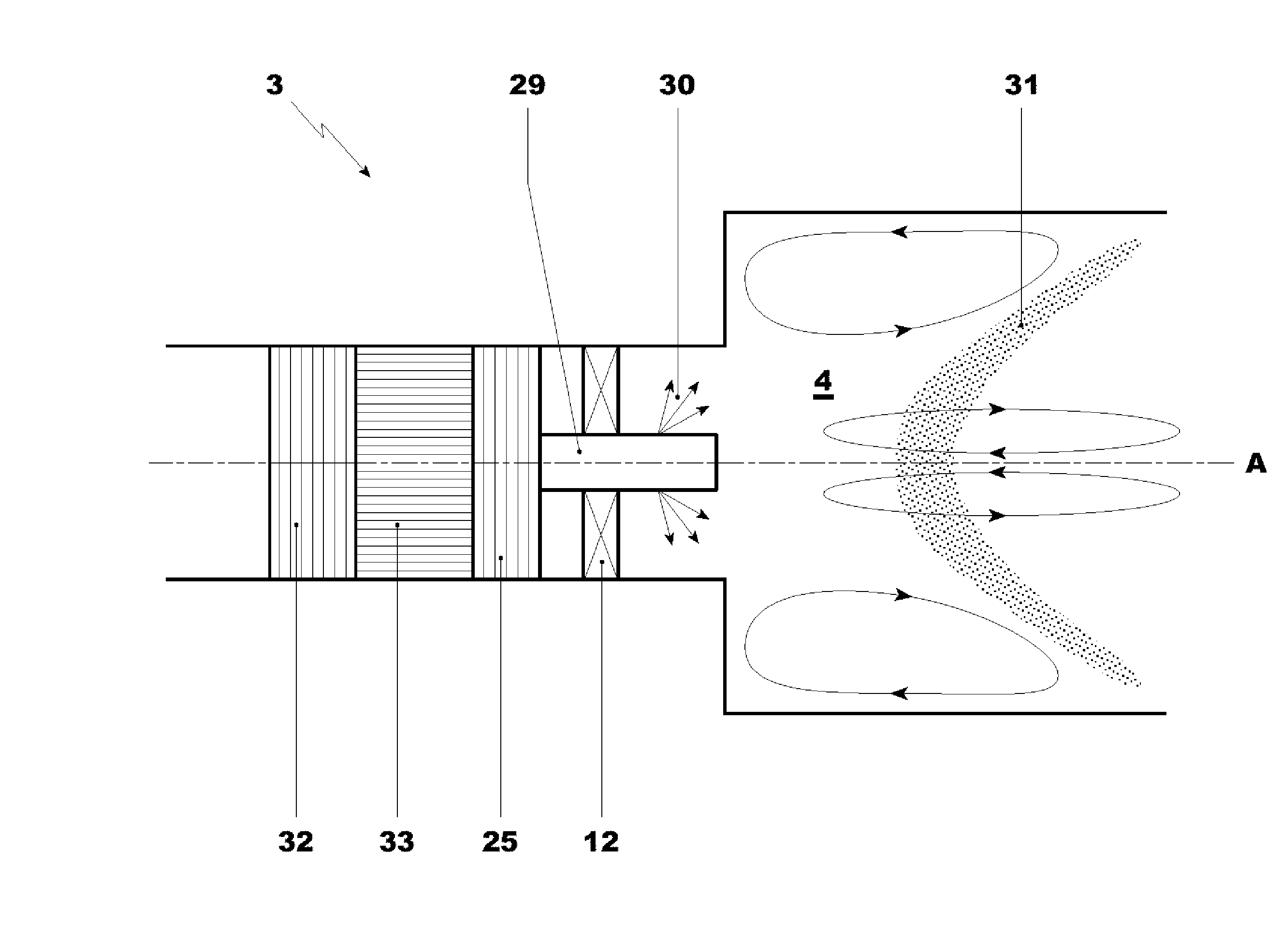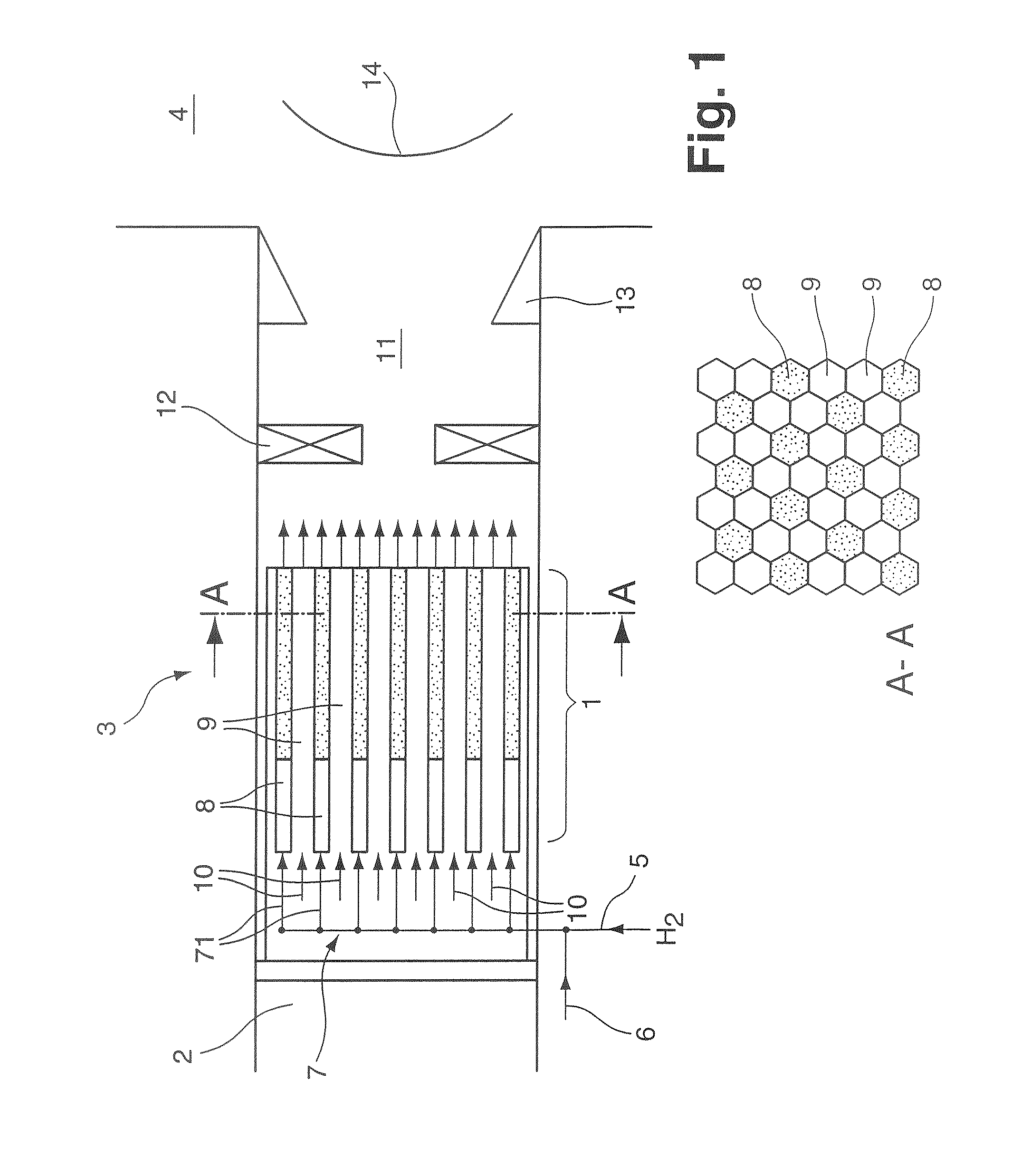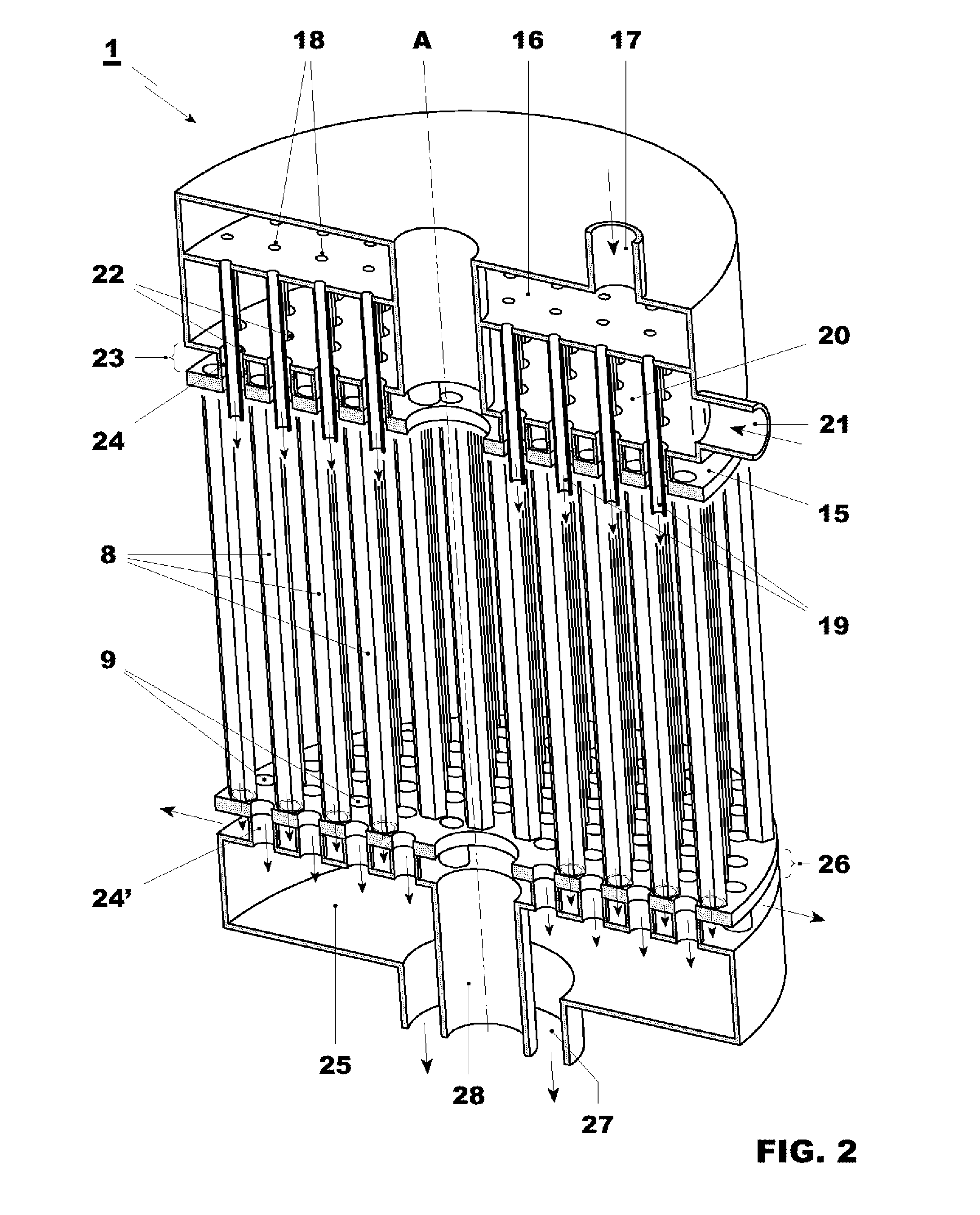Method and Device for the Combustion of Hydrogen in a Premix Burner
- Summary
- Abstract
- Description
- Claims
- Application Information
AI Technical Summary
Benefits of technology
Problems solved by technology
Method used
Image
Examples
Embodiment Construction
[0036]FIG. 1 provides a diagrammatic longitudinal sectional illustration through a burner arrangement with a catalyzer unit 1, which is arranged in the flow inlet region 2 of the burner 3 at which a combustion chamber 4 is provided downstream. To operate the burner arrangement, illustrated in FIG. 1, with hydrogen as fuel, a fuel supply line 5, and an air supply line 6 are provided, which issue jointly into an infeed 7. The infeed 7 has connecting lines 71 issuing into passage ducts 8 which project axially through the catalyzer unit 1. The catalyzer unit itself includes a carrying structure which is pierced with a multiplicity of passage ducts and in which the multiplicity of passage ducts are arranged in a matrix-like manner, preferably in each case in a hexagonal honeycomb pattern arrangement. A diagrammatic cross section through the hexagonal honeycomb structure is illustrated in the sectional illustration A-A. The passage ducts piercing the carrying structure of the catalyzer un...
PUM
 Login to View More
Login to View More Abstract
Description
Claims
Application Information
 Login to View More
Login to View More - R&D
- Intellectual Property
- Life Sciences
- Materials
- Tech Scout
- Unparalleled Data Quality
- Higher Quality Content
- 60% Fewer Hallucinations
Browse by: Latest US Patents, China's latest patents, Technical Efficacy Thesaurus, Application Domain, Technology Topic, Popular Technical Reports.
© 2025 PatSnap. All rights reserved.Legal|Privacy policy|Modern Slavery Act Transparency Statement|Sitemap|About US| Contact US: help@patsnap.com



